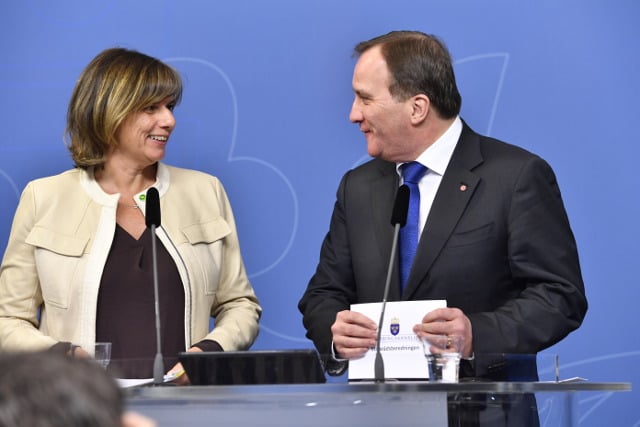The proposed reforms were presented by Swedish PM Stefan Löfven and Climate Minister Isabella Lövin on Thursday. The new law, if adopted when it is put to the Riksdag in March, will enter into force in 2018 and is designed to ensure all future governments make a credible effort to achieve emissions targets like the one set for 2045.
“We've set the goal that there should be zero net emissions by then, and all future governments would have to report on how they'll meet that goal,” Climate Minister Lövin told The Local.
“This law would mean we need to be transparent in our climate policy, and would bind future governments to having a credible climate policy,” she added.
The law would mean that each future Swedish government is required to develop an action plan for climate policy for their mandate period, then report its progress in the area to the Riksdag on an annual basis.
The goal of having zero net emissions by 2045 was decided upon by a cross parliamentary group including every party in the Riksdag with the exception of the far-right Swede Democrats.
Asked how likely it is that Sweden will reach the ambitious target, Lövin was confident.
“I think meeting the target is entirely possible. We can see that with goals we set previously, like the one for renewable energy levels by 2020, where we have already met the target. It actually tends to go quicker. Once you set a goal and start on the road, things tend to go very quickly. We'll see. I wouldn’t be surprised if it’s sooner than 2045,” she said.
In order to reach the goal, domestic emissions in Sweden will need to be reduced by 85 percent compared to the levels they were at in 1990, while at the same time investments combating climate change abroad will also need to be made.
The toughest target is a 70 percent reduction of emissions from domestic traffic by 2030 compared to the levels registered in 2010. The Climate Minister explained that transport accounts for “a third of Swedish emissions”, and improving infrastructure for electric car use as well as expanding and improving rail networks to discourage flying will be key.
Asked whether the election of Donald Trump, a climate change denier, to the highest office in the US makes it necessary for other countries to make a statement on reducing emissions, Lövin said Sweden has an important role to play in setting an example:
“Sweden has been making very good progress. At the same time as our economy and population has been growing, our emissions have reduced by more than 25 percent (since 1990). So I think investing in and achieving this goal by 2045 would provide an especially important role model for the rest of the world. To show that it can be done.”
Sweden’s centre-right opposition Moderate party welcomed the announcement of the new law, but warned that reaching the emissions target will be a tricky task.
“The climate law is good. It’s an important tool. But tools for reaching the emissions targets will also be needed,” Moderate MP Jonas Jacobsson Gjörtler, who sits on Sweden's parliamentary environment and agriculture committee, told news agency TT.



 Please whitelist us to continue reading.
Please whitelist us to continue reading.